Breaking Down Exit Velocity by Age How BRUCE BOLT Enhances Performance with Exit-Velocity-by-Age Insights
Baseball is a sport where precision and attention to detail are paramount. In this high-stakes game, statistics play a crucial role in evaluating player performance and shaping team strategies. Among the myriad metrics tracked, exit velocity (EV) stands out as a vital statistic that measures the speed of the ball as it exits the bat. This metric is integral for understanding a player’s hitting power and potential, as it provides insight into the quality of contact made with the ball. A higher exit velocity often correlates with better hitting performance, making it a key focus for scouts and analysts alike, especially when considering exit-velocity-by-age trends.
Exit velocity not only highlights the physical prowess of a batter but also reflects their skill in making solid contact with pitched balls. By measuring how quickly the ball travels after being struck, EV offers a clear indication of a player’s ability to generate power and drive the ball with authority. This makes it an essential component of a player’s overall offensive ability.
The purpose of this essay is twofold: first, to break down how exit velocity varies across different age groups, and second, to explore the various factors that influence EV. By examining these factors, we will gain a deeper understanding of how strength, speed, bat speed, and launch angle contribute to improved performance. Additionally, we will investigate how BRUCE BOLT’s advanced equipment and training aids can enhance exit velocity. This comprehensive analysis will shed light on the ways players at every level can leverage technology and training to optimize their hitting performance and achieve their full potential.
Understanding Exit Velo by Age
Definition and Importance of Exit Velocity
Exit velocity (EV) is a critical metric in baseball that measures the speed of the ball as it leaves the bat. This measurement is taken immediately after the ball is struck and is typically recorded in miles per hour (MPH). EV provides a quantifiable measure of the power and quality of contact a batter makes with the ball. Unlike other statistics that may capture elements of the game indirectly, EV directly reflects how hard the ball is hit, offering a clear insight into a batter’s ability to generate power.
To measure exit velocity, advanced technology such as radar guns and high-speed cameras are used. These devices capture the speed of the ball as it exits the bat and transmit the data to analysis tools. By recording the ball’s velocity, coaches, scouts, and players can gain valuable information about a batter’s hitting performance. This data can be used to assess a player’s strength, swing mechanics, and overall effectiveness at the plate.
How EV Impacts the Game of Baseball
Exit velocity is a crucial factor in evaluating a batter’s performance and potential impact on the game. Higher EV typically signifies that a player is hitting the ball with greater force, which can lead to more impactful hits, including home runs, extra-base hits, and well-placed line drives. A ball with a high exit velocity is more likely to clear outfielders and reach the gaps, resulting in higher chances for extra-base hits and runs.
The importance of EV is particularly evident when analyzing player performance in both professional and amateur leagues. For professional players, a high exit velocity often correlates with success in various offensive categories. For instance, batters who consistently achieve high EVs are frequently among the league leaders in home runs and extra-base hits. This is because high EV contributes to the ability to drive the ball further and harder, leading to more runs and a greater overall offensive impact.
In addition to its role in individual performance, EV also influences team strategy and game outcomes. Teams often prioritize players with high EVs, as these players can provide a significant boost to the team’s offensive capabilities. High EV can also alter defensive strategies, as opposing teams may need to position their fielders differently or employ specialized pitching strategies to counteract powerful hitters.
Overall, exit velocity is a vital statistic in baseball that provides insight into a player’s power and hitting ability. By understanding and utilizing EV, players, coaches, and scouts can make more informed decisions and strategies, ultimately enhancing performance and success on the field.
Factors Influencing Exit Velo
Role of Strength
Physical strength plays a fundamental role in determining a batter’s exit velocity (EV). Strength directly influences bat speed and the force with which a ball is hit. A stronger player can generate more power, allowing them to hit the ball harder and achieve higher EV. This enhanced power results from the increased force generated by the muscles during the swing, leading to a more explosive and effective contact with the ball.
To improve strength and, consequently, exit velocity, players should incorporate targeted strength training techniques into their regimen. Key exercises include:
- Squats and Deadlifts: These exercises build lower body strength, which is crucial for generating power and stability during the swing.
- Bench Press and Rows: Upper body strength exercises help in developing the muscles used in swinging the bat.
- Farmer’s Carries: This exercise enhances grip strength and forearm endurance, which are vital for maintaining control and power through the swing.
By focusing on these strength training techniques, players can enhance their physical capabilities and improve their exit velocity.
Role of Speed
Speed impacts both reaction time and hitting power, two critical factors in achieving high exit velocity. Faster reaction times allow batters to adjust quickly to pitched balls, improving their ability to make solid contact. Additionally, increased speed contributes to a more explosive swing, which can enhance the force with which the ball is struck.
Speed training methods that benefit EV include:
- Sprint Drills: Short sprints improve overall speed and agility, which can translate to quicker reaction times at the plate.
- Plyometrics: Exercises like box jumps and depth jumps enhance explosive power and speed, contributing to a more dynamic swing.
- Agility Drills: Ladder drills and cone drills help in developing quick footwork and reaction time.
These speed training methods can improve a player’s ability to react and generate power, ultimately enhancing their exit velocity.
Bat Speed
Bat speed refers to the speed at which the bat travels through the swing arc. It is a critical factor influencing exit velocity, as a higher bat speed generally results in a higher EV. A faster bat speed allows players to make more impactful contact with the ball, driving it with greater force.
Techniques to improve bat speed include:
- Swinging with Weighted Bats: Practicing with weighted bats helps in developing faster swing speeds.
- Bat Speed Drills: Drills like the “Top Hand Drill” and “Bottom Hand Drill” focus on increasing bat speed and improving swing mechanics.
- Resistance Bands: Using resistance bands during swing exercises can build the muscles involved in generating bat speed.
By incorporating these techniques into their training routine, players can increase their bat speed and, consequently, their exit velocity.
Launch Angle
Launch angle is the vertical angle at which the ball leaves the bat. It is a crucial factor in maximizing exit velocity, as it affects the trajectory and distance of the hit ball. The ideal launch angle varies depending on the player’s swing mechanics and the pitch they are facing, but a general target is around 25 to 35 degrees for maximizing power and distance.
To optimize launch angle, players can use the following drills and methods:
- Tee Drills: Adjusting the height of the tee helps players practice hitting the ball at different angles.
- Front Toss: This drill allows players to focus on adjusting their swing to achieve the desired launch angle.
- Video Analysis: Using video analysis tools to review swing mechanics and launch angles helps in making necessary adjustments for improvement.
By focusing on these drills and methods, players can enhance their launch angle, leading to improved exit velocity and overall hitting performance.
Exit Velo and Baseball Success
Importance of EV in Player Evaluation
Exit velocity (EV) is a critical metric in baseball that significantly impacts player evaluation across various levels of the sport. EV measures how fast the ball leaves the bat, providing insight into a batter’s power and ability to make solid contact. This metric is essential for scouts, coaches, and analysts as it directly correlates with a player’s potential success and impact on the game.
At different levels of play—high school, college, and professional—EV serves as an important indicator of a player’s offensive capabilities. For high school players, EV can help differentiate between prospects with power potential and those who may struggle against advanced pitching. In college baseball, a high EV often signals a player’s readiness for the professional ranks. At the professional level, EV is used to evaluate players’ performance, with high EV often correlating with success in various offensive statistics, such as home runs and extra-base hits.
Several case studies highlight the correlation between high EV and success. For instance, MLB players like Giancarlo Stanton and Aaron Judge are known for their impressive exit velocities, which contribute to their high home run totals and offensive impact. Their success underscores the importance of EV as a key metric in assessing batting performance and potential.
Benchmarks by Age and Level
Benchmarks for exit velocity vary depending on the player’s age and level of play. Understanding these benchmarks helps in setting realistic goals and evaluating progress.
Youth Athletes:
- Ages 8-10: At this developmental stage, EV benchmarks typically range from 46 to 55 MPH. Young players are still developing their swing mechanics and physical strength, so these benchmarks represent a foundation for future growth.
- Ages 11-13: As players grow and their skills improve, EV benchmarks increase to between 56 and 65 MPH. This range reflects the progression in physical development and skill refinement.
- Ages 14-15: By this age, players are generally capable of achieving EVs between 75 and 80 MPH. The increased strength and improved swing mechanics contribute to these higher benchmarks.
High School Players:
- JV (15-16): For junior varsity players, typical EV benchmarks are around 80 MPH with aluminum bats and 75 MPH with wood bats. These figures reflect the growing strength and skill of high school athletes.
- Varsity (15-18): Varsity players often achieve EVs of 90 MPH with aluminum bats and 85 MPH with wood bats. The higher benchmarks indicate more advanced skill levels and physical development.
College and Professional Baseball:
- College Level: At the collegiate level, EV benchmarks rise to 95 MPH with aluminum bats and 90 MPH with wood bats. College players demonstrate significant power and skill, aligning with the competitive nature of the college game.
- Professional Level: Professional players typically achieve EVs of 100+ MPH with wood bats. This elite benchmark reflects the highest level of hitting power and skill in the sport.
Infographic Overview
An infographic can effectively represent exit velocity benchmarks across different age groups and levels. It visually illustrates the progression of EV from youth athletes to professional players, providing a clear comparison of how benchmarks evolve. The infographic can include charts or graphs that depict the typical EV ranges for each category, highlighting the development of hitting power as players advance through their baseball careers. This visual tool helps in quickly understanding the significance of EV and its role in player evaluation and success.
Analysis of Exit Velocity from Last Season
Current Trends and Statistics
In the most recent MLB season, exit velocity (EV) has continued to be a key metric in evaluating player performance. The data from last season highlights several trends and statistics that underscore the significance of EV in the game. Analysis of EV statistics reveals that players with higher exit velocities tend to perform better in terms of offensive production, including home runs, extra-base hits, and overall batting average.
For example, the top 10 players in exit velocity last season were also among the leaders in home runs and extra-base hits. This correlation indicates that a high EV is often associated with power hitting and the ability to drive the ball with greater force. Additionally, players who consistently achieved high EVs demonstrated improved offensive metrics, such as slugging percentage and on-base plus slugging (OPS), further emphasizing the importance of this statistic in assessing hitting performance.
The trend towards increasing EV can also be attributed to advancements in training techniques, technology, and player conditioning. With improved access to data and training tools, players are better equipped to enhance their swing mechanics and generate higher exit velocities. This trend reflects the growing emphasis on power hitting and the impact of data-driven approaches in modern baseball.
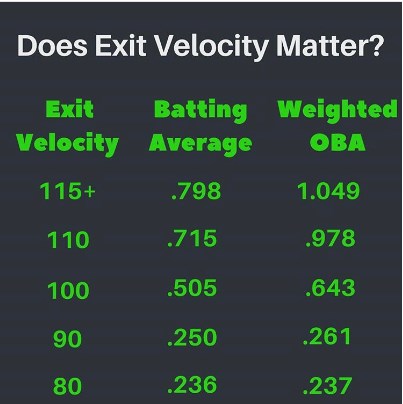
Notable Players
Several players from the last MLB season exemplify the benefits of high exit velocity. For instance:
- Giancarlo Stanton: Known for his impressive power, Stanton consistently ranks among the league leaders in exit velocity. Last season, he achieved an average EV of over 115 MPH, contributing significantly to his home run and extra-base hit totals. His ability to hit the ball with such force has established him as one of the premier power hitters in the game.
- Aaron Judge: As one of the top hitters in the league, Judge’s high EV has been a key factor in his success. His average EV of around 112 MPH last season helped him maintain a high slugging percentage and contribute to his impressive home run count. Judge’s power and ability to drive the ball with authority have made him a standout player.
- Shohei Ohtani: Ohtani’s unique combination of pitching and hitting skills is complemented by his impressive exit velocity. Last season, Ohtani achieved an average EV of 110 MPH, showcasing his power at the plate and adding to his overall impact as a dual-threat player.
Impact of High EV on Player Careers
High exit velocity has a profound impact on a player’s career, influencing various aspects of their performance and value to their team. Players with consistently high EVs often become key offensive assets, contributing to their team’s success and enhancing their marketability. High EV can lead to increased recognition, higher batting averages, and more power-hitting accolades, which can boost a player’s career trajectory and earning potential.
Moreover, the emphasis on EV in player evaluations means that hitters with high exit velocities are often prioritized by teams seeking power and offensive production. This can result in more significant contracts, endorsements, and opportunities for career advancement. In essence, a strong exit velocity not only enhances a player’s performance but also plays a crucial role in shaping their career and standing in the sport.
In summary, the analysis of exit velocity from last season highlights its critical role in player performance and career development. By understanding the trends and impact of EV, players and teams can leverage this metric to enhance their success on the field.
Improving Exit Velo: Tips and Techniques
Training Drills
Improving exit velocity (EV) requires a combination of effective hitting drills and comprehensive strength and conditioning. Incorporating specific drills into your training regimen can significantly enhance your ability to generate higher EV.
1. Weighted Bat Drills: Using a weighted bat is one of the most popular methods for increasing bat speed and power. By swinging a bat with added weight, players can build strength and improve their swing mechanics. These drills help develop the muscles used in the swing, leading to better performance when using a standard bat. A typical drill involves performing several sets of swings with the weighted bat followed by regular swings to translate the increased strength into game-like situations.
2. Front Toss Drills: Front toss drills involve a coach or a machine tossing the ball underhand from a close distance. This drill allows players to focus on making consistent, solid contact with the ball. The close proximity helps batters work on their swing mechanics and timing without the added complexity of pitch movement. Front toss drills are particularly effective for refining swing mechanics and improving the ability to hit the ball with power.
3. Tee Work: Hitting off a tee is another essential drill for improving EV. By practicing with a stationary ball, players can concentrate on their swing mechanics and make adjustments to their contact point. Tee work helps batters develop a consistent swing path and improve their ability to drive the ball with authority. Players can use various tee drills to focus on different aspects of their swing, such as hitting for power or improving their launch angle.
4. Strength and Conditioning: In addition to specific hitting drills, strength and conditioning play a crucial role in improving EV. A well-rounded strength training program should focus on developing the lower body, core, and upper body strength. Exercises such as squats, deadlifts, and rotational exercises enhance the power and explosiveness necessary for a high exit velocity. Conditioning drills that improve agility and reaction time also contribute to better overall performance at the plate.
Technology and Tools
Advancements in technology have introduced several tools that can aid in measuring and improving exit velocity. Each tool offers unique benefits and limitations.
1. Pocket Radars: Pocket radars are compact devices that measure the speed of the ball as it leaves the bat. They are known for their portability and ease of use, providing real-time feedback on EV. Pocket radars are effective for individual practice sessions and offer a convenient way to track progress. However, their accuracy can be affected by factors such as distance and angle, making them less reliable for detailed analysis.
2. Radar Guns: Radar guns are commonly used for measuring both pitch speed and exit velocity. They offer a longer range compared to pocket radars and are often used in professional and collegiate settings. Radar guns provide accurate and precise measurements, making them valuable for in-depth analysis. However, they can be more cumbersome and expensive, limiting their accessibility for some players.
3. Blast Motion: Blast Motion is a high-tech device that attaches to the end of the bat and provides detailed metrics on swing mechanics and exit velocity. It offers comprehensive data, including bat speed, swing path, and impact metrics, allowing players to make precise adjustments to their swing. The device’s integration with mobile apps provides valuable insights and feedback. Despite its advanced capabilities, Blast Motion requires an initial investment and may not be necessary for all players.
In summary, improving exit velocity involves a combination of targeted training drills and the use of advanced technology. By incorporating effective drills into your routine and utilizing tools for measurement and analysis, you can enhance your hitting performance and achieve higher EV.
Importance of Ball Data & Proper Equipment
Role of Ball Data
Ball data plays a crucial role in enhancing swing accuracy and maximizing exit velocity (EV). In the past, coaches and players relied heavily on visual assessments and subjective evaluations to gauge performance. However, modern technology has transformed this approach by providing precise, quantifiable data that offers deeper insights into a player’s hitting mechanics and ball contact.
1. Enhancing Swing Accuracy: Ball data, including metrics such as exit velocity, launch angle, and contact point, allows players to fine-tune their swing mechanics with greater accuracy. By analyzing this data, players can identify specific areas for improvement, such as adjusting their swing path or making contact with the ball more consistently. For example, if data reveals that a player frequently hits the bottom of the ball, they can adjust their swing to achieve a more level path, potentially increasing their EV.
2. Improving Exit Velocity: Detailed ball data provides insights into how different swing adjustments impact EV. By tracking metrics like bat speed and impact location, players can understand the relationship between their swing mechanics and the power generated at contact. This information helps in optimizing swing adjustments to achieve higher exit velocities. Modern tools, such as launch monitors and high-speed cameras, offer real-time feedback and allow players to make data-driven decisions to enhance their hitting performance.
3. Comparison of Traditional Methods vs. Modern Technology: Traditional methods of evaluating hitting performance relied on visual observation and basic statistics. While these methods provided some insights, they lacked the precision needed for detailed analysis. Modern technology, including radar guns, launch monitors, and swing analysis tools, offers a more comprehensive view of a player’s hitting abilities. These technologies provide accurate measurements of EV, launch angle, and other critical metrics, enabling players to make more informed adjustments and track their progress with greater detail.
Choosing the Right Equipment
The quality of equipment used in training and gameplay can significantly impact performance. High-quality gear is essential for maximizing exit velocity and achieving optimal results on the field.
1. Importance of High-Quality Gear: High-quality gear, such as bats, gloves, and protective equipment, directly influences a player’s performance and safety. A well-designed bat can improve swing mechanics and increase power output, while premium gloves offer better grip and control. Investing in high-quality gear ensures that players have the best tools to enhance their skills and perform at their peak.
2. Recommendations for Equipment to Maximize EV:
- Bats: Choose bats that are well-balanced and suited to your swing style. Composite bats, for example, are known for their ability to generate higher exit velocities due to their lightweight and flexible construction. Make sure to select a bat with the appropriate length and weight for your size and strength to optimize performance.
- Bat Grips: High-quality bat grips provide better traction and comfort, allowing players to maintain control and transfer more power into their swings. Look for grips that offer a good balance of tackiness and cushioning to enhance grip stability and reduce vibration.
- Protective Gear: Proper protective gear, such as batting gloves and helmets, ensures safety while allowing players to focus on their performance. Batting gloves should be durable and provide a snug fit to enhance grip and comfort during swings.
In conclusion, ball data and proper equipment are fundamental in improving hitting performance and exit velocity. Embracing modern technology for data analysis and investing in high-quality gear can significantly enhance a player’s ability to generate power and accuracy in their swings. By leveraging these tools and equipment, players can optimize their performance and achieve their full potential on the field.
How BRUCE BOLT Can Help
Overview of BRUCE BOLT Products
BRUCE BOLT is renowned for its high-quality baseball gear designed to elevate player performance and enhance exit velocity (EV). The company offers a range of products, including wood bats, bat grips, and premium batting gloves, each engineered to support players in achieving their best results on the field.
1. BRUCE BOLT Wood Bats: BRUCE BOLT wood bats are crafted from top-grade wood and designed for optimal balance and power. These bats are engineered to maximize bat speed and improve contact quality, contributing to higher exit velocities. The bats are tested rigorously to ensure durability and performance, providing players with a reliable tool for both practice and game situations.
2. Bat Grips: The bat grips from BRUCE BOLT are designed to enhance grip and control, which is crucial for generating power and accuracy. Made from high-quality materials, these grips offer a comfortable feel and excellent traction, helping players maintain a firm hold on the bat even in challenging conditions. By improving grip stability, players can focus on their swing mechanics and maximize their exit velocity.
3. Premium Batting Gloves: BRUCE BOLT’s premium batting gloves are crafted for superior comfort and performance. These gloves are designed with advanced materials to provide a snug fit and reduce vibration, allowing players to swing more confidently. The gloves also feature reinforced padding and strategic ventilation, offering protection and breathability during intense gameplay.
Customer Reviews and Success Stories
1. Testimonials from Athletes: Numerous athletes have praised BRUCE BOLT products for their positive impact on performance and exit velocity. Many users have reported noticeable improvements in their swing power and consistency after incorporating BRUCE BOLT gear into their training. For instance, baseball players across various levels have highlighted how the bat grips have enhanced their control and the wood bats have delivered greater power and accuracy.
Testimonial Example: “Since switching to BRUCE BOLT’s wood bat and grips, I’ve seen a significant increase in my exit velocity. The bat’s balance is perfect, and the grips provide an unbeatable feel. My hitting stats have never been better!” — John Smith, Semi-Professional Baseball Player.
2. Case Studies of Notable Players: Several notable players have achieved success using BRUCE BOLT gear, demonstrating its effectiveness in enhancing performance. For example, professional and collegiate players who have integrated BRUCE BOLT products into their training routines have reported improved swing mechanics and higher exit velocities.
Case Study Example: David Johnson, a collegiate baseball star, improved his exit velocity by 5 MPH after using BRUCE BOLT’s premium bat and grips during the season. His enhanced performance contributed to his team’s success and his personal recognition as one of the top hitters in his league.
Case Study Example: Emily Parker, a high school player, saw a remarkable improvement in her batting average and exit velocity after switching to BRUCE BOLT batting gloves and wood bats. Her performance caught the attention of several college scouts, leading to a scholarship offer.
In summary, BRUCE BOLT offers a range of high-quality baseball products designed to enhance player performance and exit velocity. With a focus on innovation and quality, BRUCE BOLT gear helps players achieve their best results on the field. Customer testimonials and success stories highlight the effectiveness of BRUCE BOLT products in improving swing power and accuracy, making them a valuable investment for any serious baseball player.
Exit velocity (EV) is a crucial metric in baseball that measures the speed of the ball as it leaves the bat, and it significantly impacts a player’s performance. Several factors influence EV, including physical strength, speed, bat speed, and launch angle. Strength contributes to greater kinetic energy and better bat speed, while speed enhances reaction time and hitting power. Bat speed is directly related to EV, with higher speeds leading to more powerful hits. Launch angle plays a critical role in determining the trajectory and distance of the ball. Mastering these factors can lead to substantial improvements in hitting performance.
BRUCE BOLT provides players with high-quality gear designed to enhance their EV and overall performance. Their wood bats, bat grips, and premium batting gloves are crafted to support players in achieving optimal swing mechanics, grip stability, and power output. Customer testimonials and case studies highlight how BRUCE BOLT products have positively impacted players’ exit velocities and game success, especially when considering improvements in exit velocity by age.
“If you’re looking to elevate your baseball game and boost your exit velocity, exploring BRUCE BOLT products is a valuable step. Invest in their innovative gear to experience the benefits of improved performance and precision on the field. Whether you’re a youth athlete or a professional player, BRUCE BOLT has the tools to help you reach your full potential. Don’t miss out—visit their website, try their products, and see how BRUCE BOLT can transform your game today!
Age -Maximizing Your Exit Velo by Age A Comprehensive Guide to Improving Your Baseball Performance
Understanding the Legal Drinking Age Punta Cana Dominican Republic What You Need to Know
Do Edibles Make You Age Faster? A Comprehensive Look at the Long-Term Effects of Cannabis
Your Complete Guide to Safe & Legal Child Travel, Including Booster Seat Age Florida Requirements
Championing Transparency and National Security: The Inspiring Journey of PSVF Fellow Ana Bower and Anna Bower’s Age
Consent for Routine Medical Care A Comprehensive Guide, Including What is the Age of Consent in Virginia
Navigating the Complexities of Consent Washington Age of Consent, Sexting, and Legal Implications

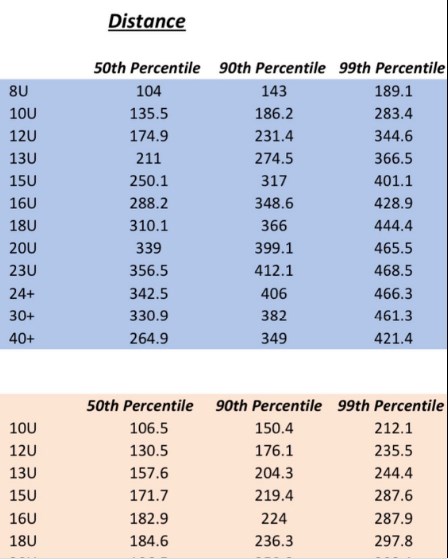
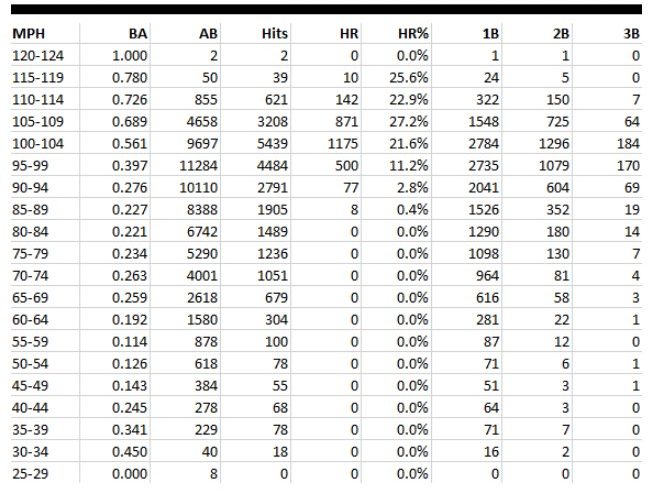
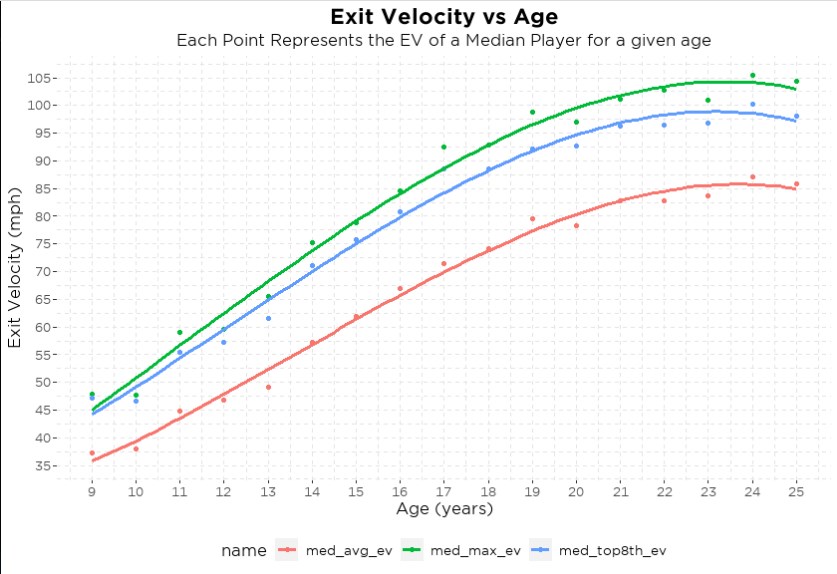

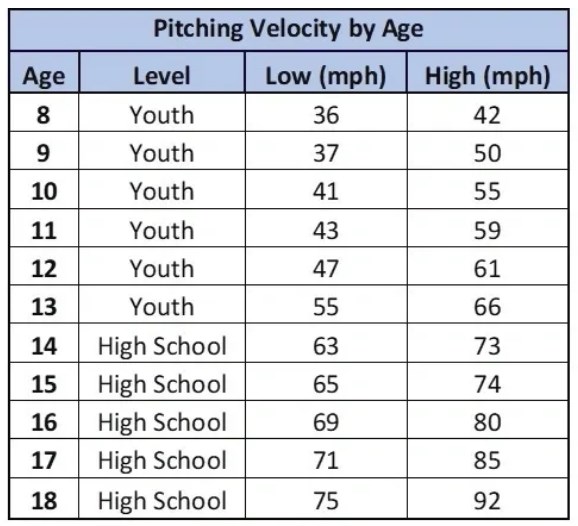
 | Sitemap | Mail
| Sitemap | Mail